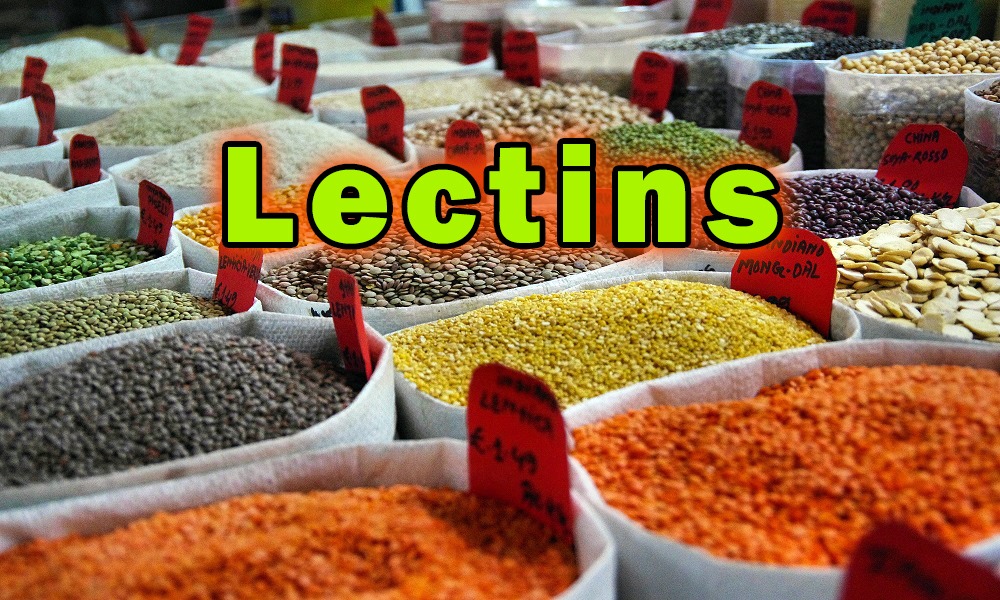Plants, unlike animals, cannot run away from predators. To defend themselves from herbivores, insects, fungi and other threats, they produce toxic defense chemicals. One of them is known as lectins.
Lectins are a plant defense mechanism that mainly protect the seeds, but can be found in other parts of the plant as well. As with anything living, the highest priority of the entity is reproduction. Therefore, seeds tend to have a higher concentration of antinutrients and other harmful chemicals. The antinutrients are simply a way for the seeds to absorb minerals that they need to grow into a plant. If someone is stupid enough to consume these seeds, the antinutrients will simply do its job and absorb minerals while traveling throughout the digestive tract – and the idiot consuming the seeds will gain nothing of nutritional value, just lose some minearls.
Lectins on the other hand is more of a defense chemical. Actually, lectins are so effective that today’s modern crops are genetically modified to produce higher concentrations of lectins to better fight off pests. This might sound good if you want to make big bucks growing crops in hostile environments, but once you realize that these toxic chemicals are present in most human-made Frankenstein-foods that you might end up consuming, you can literally feel your health and longevity fading away. This is pure poison!
As part of a defense system, lectins are highly inflammatory, and resistant to cooking and digestion. This means that they pass right through the gut where they wreak havoc. Although lectins are big carbohydrate-binding proteins that at first contact can’t get through our intestinal wall, they are very sticky and easily attach themselves. Once connected to the intestinal wall, these big lectin proteins start doing damage by blocking nutrients from getting access through the wall to the inside (especially calcium, iron, phosphorus, and zinc). This ‘sticky’ ability can also cause cells to clump together. For example, when lectins reach the bloodstream, blood cells can start to clump together, forcing the body to get rid of them (which can cause anemia, which we often see in vegans).
Once lectins have attached themselves to our intestine wall, they start to release zonulin, which tells our intestinal wall to start opening up the tight-junctions between the enterocytes. This is what causes leaky gut syndrome – allowing unwanted particles to get through our gut lining and enter our bloodstream, causing “immune responses” in the process (toxicity).
This increase in offenders in the blood will force the liver and kidneys to work a lot harder to filter them all out. As the gut-lining becomes increasingly damaged, the liver or kidneys may not be able to keep up with the constant flow of bacteria, pathogens, yeast, undigested macro-nutrients and waste products escaping through the gut lining.
While our body will try to get rid of them, lectins bind to carbohydrates or glycolipids and glycoproteins that stick off the membranes of our cells. This means that lectins can hook on to a normal healthy cell, and as a result, our body can mistakenly try to get rid of healthy cells. In other words, given enough time, lectins can cause what the medical establishment calls autoimmune disorder.
Leaky gut syndrome, with unwanted offenders reaching our bloodstream, seems to play a crucial role in the development of celiac disease, Crohn’s disease, ulcerative colitis, asthma, rheumatoid arthritis, psoriasis, chronic fatigue syndrome, and much more.
Lectins are also known for disrupting communication between cells. When one neuron is trying to relay a message to another neuron, lectins can block the transmission. This can result in symptoms like brain fog and decreased mental performance.
Another sinister way lectins interrupt communication is via interacting and modifying hormone functions. Lectins can interact with endocrine receptors, disrupting and changing hormone function.
Lectins are found in all plants, but legumes (beans, lentils, peas, soybeans, cashews, peanuts), nightshade (potatoes, peppers, eggplants, tomatoes, goji-berries), and whole grains (wheat, corn, quinoa) contain the highest amounts.
And no, don’t even bother with rinsing, soaking, sprouting, and cooking in order to try to eliminate lectins and other antinutrients and toxins. Yes, a small percentage will be removed, but so will any of the tiny amounts of nutrients that actually might exist in the plant – leaving you with a totally useless sludge of fiber and some toxins.
